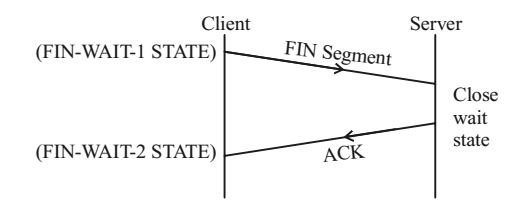Computer networks miscellaneous
- Assume that the bandwidth for a TCP connection is 1048560 bits/sec. Let a be the value of RIT in milliseconds (rounded off to the nearest integer) after which the TCP window scale option is needed. Let b be the maximum possible window size with window scale option. Then the values of a and b are
-
View Hint View Answer Discuss in Forum
NA
Correct Option: C
NA
- Suppose that the stop-and-wait protocol is used on a link with a bit rate of 64 kilobits per second and 20 milliseconds propagation delay. Assume that the transmission time for the acknowledgement and the processing time at nodes are negligible. Then the minimum frame size in bytes to achieve a link utilization of at least 50% is _________.
-
View Hint View Answer Discuss in Forum
Given that B = 64 kbps
Tp = 20 ms
η ≥ 50%
For η ≥ 50% ⇒ L ≥ BR
⇒ L = 64 × 103 × 2 × 20 × 10–3
= 2560 bits = 320 bytesCorrect Option: C
Given that B = 64 kbps
Tp = 20 ms
η ≥ 50%
For η ≥ 50% ⇒ L ≥ BR
⇒ L = 64 × 103 × 2 × 20 × 10–3
= 2560 bits = 320 bytes
- In one of the pairs of protocols given below, both the protocols can use multiple TCP connections between the same client and the server. Which one is that?
-
View Hint View Answer Discuss in Forum
HTTP (Hyper Text Transfer Protocol) and SMTP (Simple Message Transfer Protocol) protocols can use several TCP associations between the same client and the server.
Correct Option: D
HTTP (Hyper Text Transfer Protocol) and SMTP (Simple Message Transfer Protocol) protocols can use several TCP associations between the same client and the server.
- Consider a TCP client and a TCP server running on two different machines. After completing data transfer, the TCP client calls close to terminate the connection and a FIN segment is sent to the TCP server. Server-side TCP responds by sending an ACK which is received by the client-side TCP. As per the TCP connection state diagram (RFC 793), in which state does the client-side TCP connection wait for the FIN from the server-side TCP?
-
View Hint View Answer Discuss in Forum


Correct Option: D


- The values of parameters for the Stop-and-Wait ARQ protocol are as given below :
Bit rate of the transmission channel = 1 Mbps.
Propagation delay from sender to receiver = 0.75 ms.
Time to process a frame = 0.25 ms.
Number of bytes in the information frame = 1980.
Number of bytes in the acknowledge frame = 20.
Number of overhead bytes in the information frame = 20.
Assume that there are no transmission errors. Then, the transmission efficiency (expressed in percentage) of the Stop-and-Wait ARQ protocol for the above parameters is _______ (correct to 2 decimal places).
-
View Hint View Answer Discuss in Forum
Given data: B = 1 Mbps , Tprocess = 0.25 ms, TPt = 0.75 ms LIF = 1980 bytes , L(Overhead) = 20 bytes , LAF = 20 bytes
Efficiency (η) = ?
As we know that,Transmission time of data = Data size Bandwidth So , TX = L = ( LIf + LAf ) = ( 1980 + 20 ) bytes B B 1 × 106( bits / sec )
(∵ 1 byte = 8 bit)= 2000 × 8 (bits) 106( bits / sec )
TX = 16 m sec
Propagation time = 0.75 m sec.Transmission time of TACK = LAF = 20 × 8 bits B 106
∴ TACK = 0.16 m sec.
Then transmission efficiency of stop and wait ARQ.⇒ TX = 16 (TX + TACK + 2TPt + TProcess) (16 0.16 + 2 × 0.75 + 0.25) = 16 = 0.8933 = 89.33% 17.91
Hence answer is 89.33%Correct Option: B
Given data: B = 1 Mbps , Tprocess = 0.25 ms, TPt = 0.75 ms LIF = 1980 bytes , L(Overhead) = 20 bytes , LAF = 20 bytes
Efficiency (η) = ?
As we know that,Transmission time of data = Data size Bandwidth So , TX = L = ( LIf + LAf ) = ( 1980 + 20 ) bytes B B 1 × 106( bits / sec )
(∵ 1 byte = 8 bit)= 2000 × 8 (bits) 106( bits / sec )
TX = 16 m sec
Propagation time = 0.75 m sec.Transmission time of TACK = LAF = 20 × 8 bits B 106
∴ TACK = 0.16 m sec.
Then transmission efficiency of stop and wait ARQ.⇒ TX = 16 (TX + TACK + 2TPt + TProcess) (16 0.16 + 2 × 0.75 + 0.25) = 16 = 0.8933 = 89.33% 17.91
Hence answer is 89.33%

